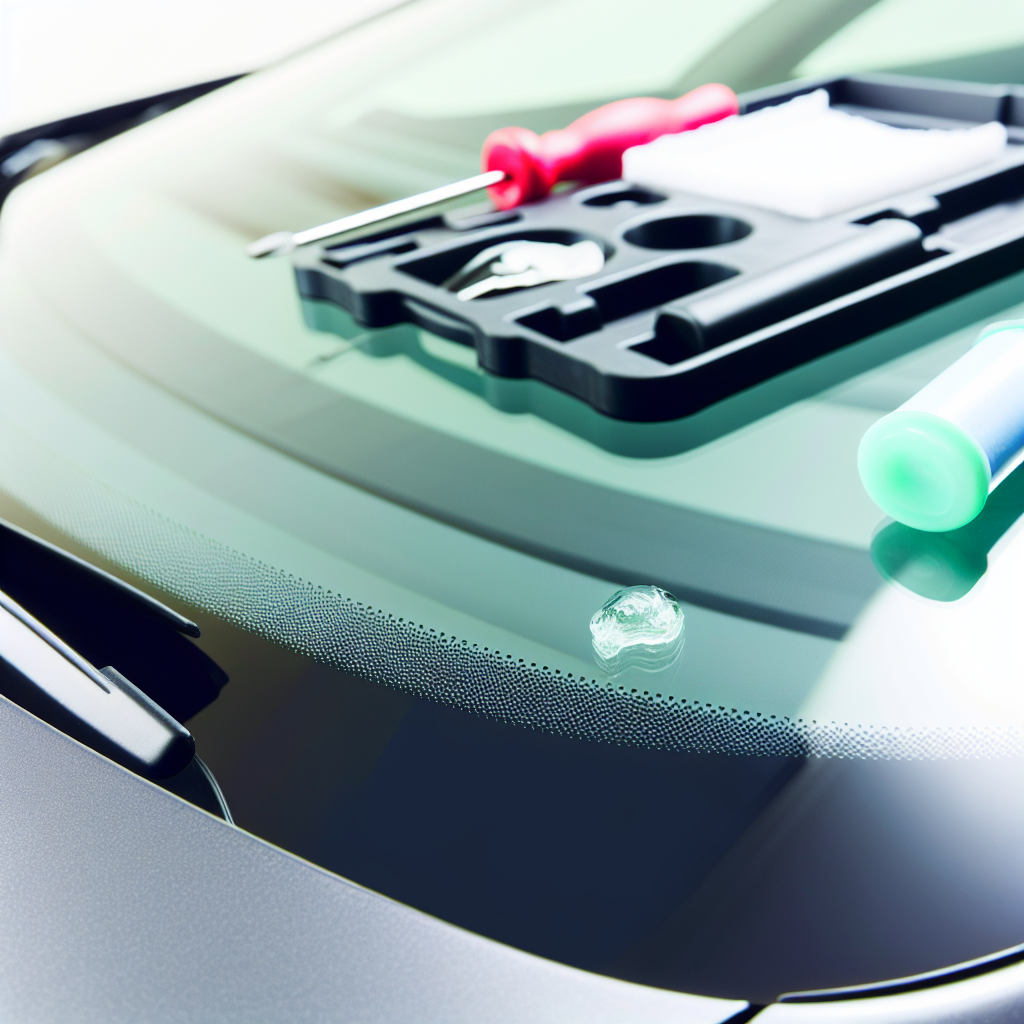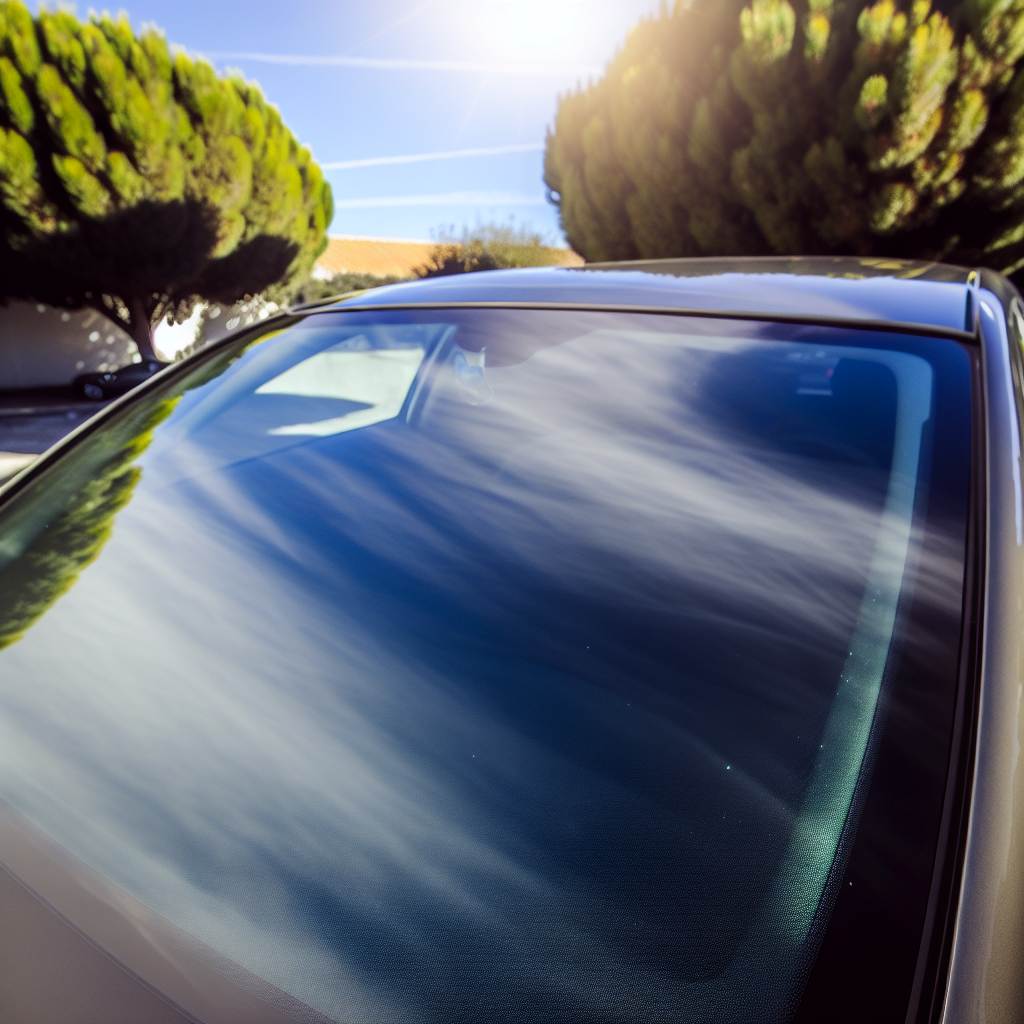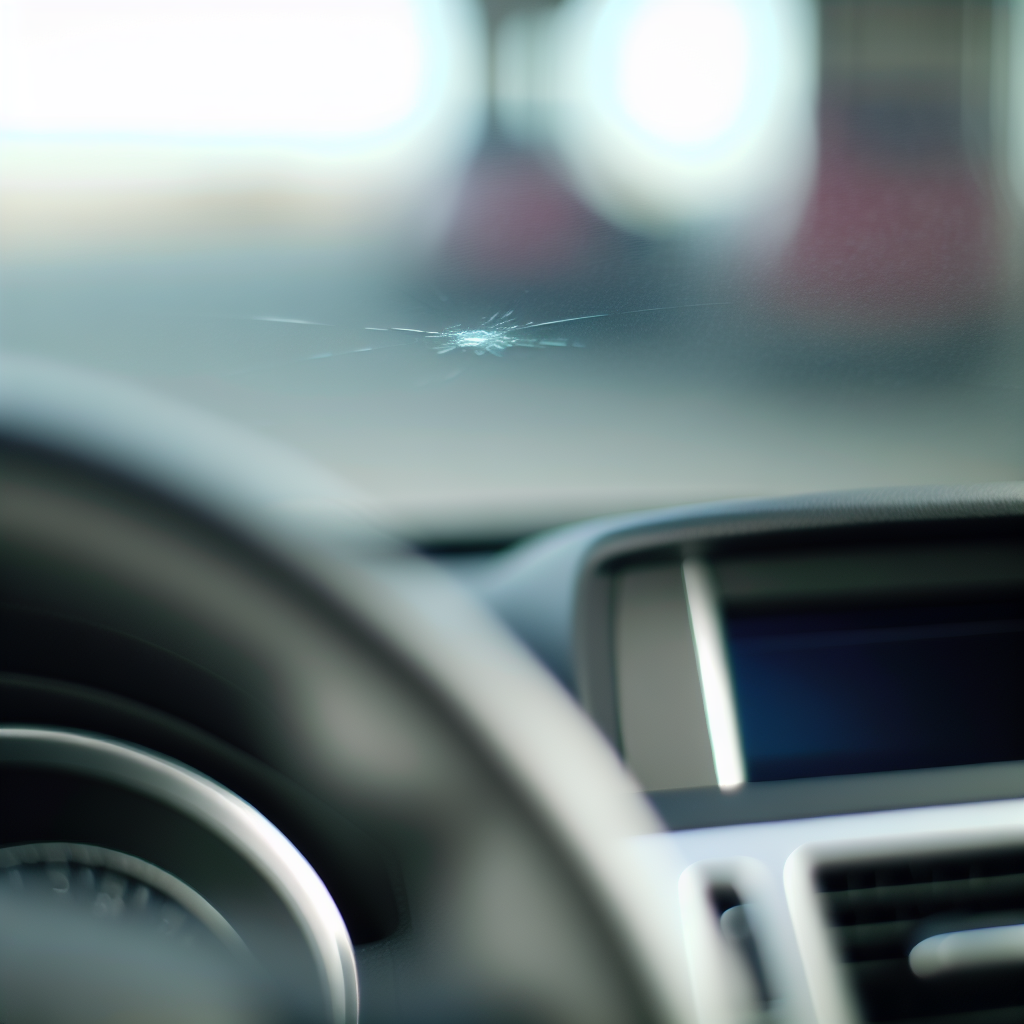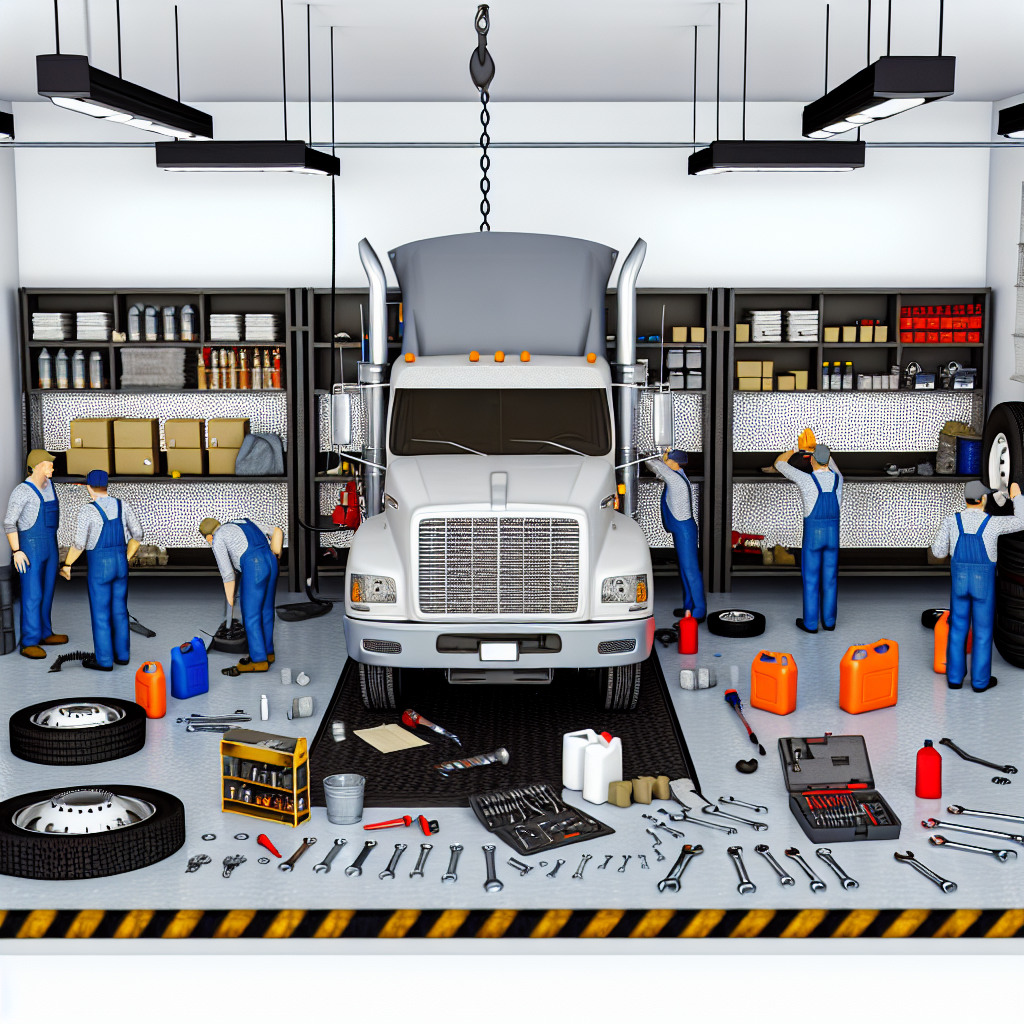Are you tired of the frustrating experience of finding a small chip or crack in your windshield? It seems to happen at the most inconvenient times, doesn’t it? Ignoring these minor imperfections can lead to much bigger issues down the road, making timely repair not just important, but essential. Professional repairs for small windshield damage can be surprisingly costly, typically ranging from $60 to $90, and if you let the problem escalate, you may find yourself facing a much larger bill.
Fortunately, if you’re handy and willing to take on a DIY project, there are numerous methods available to tackle windshield repairs on your own. This blog will explore effective DIY approaches for repairing those pesky chips and cracks, allowing you to save money and restore the clarity of your windshield without breaking the bank. Let’s dive into the world of DIY windshield repair, where a small investment in a repair kit might just save you a hefty professional fee!



A close-up image of a damaged windshield showing a clear chip or crack mark. The windshield is viewed from the driver’s perspective to highlight the importance of visibility.
Types of Windshield Damage
Windshield damage comes in different forms, each with unique effects on visibility and safety. It’s essential to recognize these types to make informed repair decisions.
Chips
Chips are small, generally circular damages caused by hard objects like gravel. Although they may appear insignificant, they can jeopardize your windshield’s integrity. Deep chips can lead to larger cracks over time, as the glass structure weakens. Repairs are usually simple but should be made quickly to prevent escalation. Ignoring them may block the driver’s view, impairing visibility.
Cracks
Cracks are longer than chips and can arise from various factors like temperature changes or impacts. They can be categorized as follows:
- Star Cracks: These radiate from a central point like a star and can grow rapidly under stress.
- Edge Cracks: These start at the windshield’s edge and may extend into the viewable area, compromising the windshield’s structural integrity, making prompt repairs crucial.
- Combination Cracks: These comprise both chips and cracks, potentially affecting visibility more than isolated damage.
Each crack type poses different risks, with larger or more complex cracks leading to increased windshield deterioration over time.
The Importance of Timely Repairs
Promptly addressing windshield damage is vital for safety and visibility. A small chip can evolve into a long crack, eventually requiring an expensive windshield replacement. Experts agree that “A timely repair is the best course of action.” Quick intervention can save money and provide a clearer view of the road, enhancing safety.
In summary, whether it’s a chip or a crack, recognizing and fixing windshield damage quickly is crucial for a safer driving experience. Ignoring these problems can have serious repercussions for visibility and the vehicle’s structure.
DIY Windshield Repair Kits and Autoglass Repair Techniques
DIY windshield repair kits are designed to address minor chips and cracks in vehicle windshields, offering a cost-effective alternative to professional repair services.
Description and Components
A typical DIY windshield repair kit includes:
- Resin: A specialized adhesive that fills the chip or crack.
- Applicator: A device to inject the resin into the damaged area.
- Curing Strips: Plastic strips that cover the resin during the curing process.
- Razor Blade: Used to remove excess resin after curing.
- Instruction Manual: Guidelines for proper application.
Functioning
The repair process involves cleaning the damaged area, applying the resin using the applicator, covering it with a curing strip, allowing it to cure (often under sunlight or UV light), and then removing any excess resin with the razor blade.
Cost Analysis
- DIY Kits: These kits typically cost between $10 to $30. source
- Professional Repair Services: The cost for professional repair can range from $60 to $100 for a chip and $150 to $300 for a crack, depending on the size and depth. source
- Windshield Replacement: If the damage is extensive, replacing the windshield can cost between $200 to $400 for standard vehicles, and up to $1,500 or more for luxury models or those with advanced features. source
Customer Reviews
While specific customer reviews are not available in the provided sources, general feedback indicates that DIY kits can be effective for small, simple chips or cracks. However, they may not be as effective for larger or more complex damage. Additionally, the quality of repair with a DIY kit often falls short of professional standards, and incorrect application can lead to poor results. source
In summary, DIY windshield repair kits offer an affordable solution for minor windshield damage, utilizing essential autoglass repair techniques. However, for larger or more complex issues, professional repair or replacement is recommended to ensure safety and quality.
| Feature | DIY Windshield Repair Kits | Professional Repair Services |
|---|---|---|
| Average Cost | $10 – $30 | $60 – $100 |
| Ease of Use | Moderate | Easy |
| Time Needed for Application | 30 minutes to 1 hour | 30 minutes |
| Effectiveness | Moderate for small damage | High for all repairs |
Common Myths About Using Super Glue for Windshield Repairs
When it comes to windshield repairs, using super glue is a commonly held misconception that can lead to safety and functional issues. Many people believe that since super glue can adhere to glass, it should be effective for repairing windshield chips and cracks. However, experts highlight that this is not the case.
One critical insight into this misconception is summarized well with the quote:
“Super glue does adhere to glass, it doesn’t hold up well.”
Here are several reasons why super glue is not a recommended solution for windshield repairs:
- Ineffective Bonding and Structural Integrity: While super glue might create an initial bond with glass, it fails to restore the windshield’s structural strength, which is vital for the safety and integrity of the vehicle. When exposed to stress or impacts, a super glue bond is likely to break. According to experts, using super glue does not guarantee long-lasting repairs.
- Brittleness and Temperature Sensitivity: After drying, super glue becomes brittle, which cannot handle the natural expansion and contraction of glass resulting from temperature fluctuations. This brittleness can lead to further cracking or separation of the bond from the glass. Studies have shown that the adhesive properties degrade over time, especially under extreme temperature changes.
- Impaired Visibility: Another issue associated with using super glue is the potential for optical distortions or haze on the windshield. This can significantly compromise the driver’s visibility, creating dangerous driving conditions. The glass is not simply a transparent surface but a critical component of vehicle safety.
- Chemical Reactions: Super glue has active chemicals that can react negatively with the materials in the windshield. If applied improperly, it may cause discoloration or fogging, ultimately weakening the glass and making future repairs more complicated and costly.
- Difficulties in Professional Repairs: If a windshield has been previously repaired with super glue, professionals may face challenges when trying to perform proper repairs later. The existing seal can complicate or hinder effective professional repair, leading to the likelihood of needing a complete windshield replacement, which is considerably more expensive than a straightforward professional repair.
In summary, while super glue might provide a temporary hold, it is not a reliable or safe method for repairing windshield damage. Experts recommend using specialized windshield repair kits or consulting with professional auto glass technicians to ensure a safe, effective, and long-lasting solution for windshield repairs.
Conclusion
In summary, understanding the nuances between DIY windshield repair and professional services is crucial for vehicle safety and cost-effectiveness. For minor chips and superficial cracks, utilizing a DIY windshield repair kit can be a practical solution, provided one follows the instructions diligently. These kits typically cost significantly less than professional repairs, making them accessible for budget-conscious vehicle owners.
However, as emphasized by experts, not all damage is suitable for at-home fixes. Complicated issues, larger cracks, or any damage affecting the driver’s line of sight should prompt immediate consultation with a professional. As the saying goes, “A timely repair is the best course of action”; procrastination in addressing even minor windshield imperfections can lead to escalating repairs and unexpected costs.
Therefore, take action swiftly—assess any damage to your windshield and decide whether a DIY repair or professional help is warranted. Keeping your windshield in optimal condition is essential not just for the longevity of the vehicle but also for the safety of everyone on the road. Remember, while hands-on repairs can be satisfying and cost-effective, there are times when expert intervention is the wise choice.
FAQ about DIY Windshield Repair
1. How effective are DIY windshield repair kits?
DIY windshield repair kits can be effective for minor chips and cracks, especially those that do not obstruct your line of sight. However, the success of the repair largely depends on the type and extent of the damage, as well as how well you follow the instructions provided. While many users find satisfaction with their results, it is important to note that repairs may not match the quality of professional repairs. For larger cracks or damage in critical areas, consulting a professional is often advisable.
2. What environmental factors can affect the repair process?
Environmental factors such as temperature fluctuations and humidity can significantly influence the curing process of DIY windshield repairs. For instance, if the temperature is too low or too high, the resin may not cure properly, leading to ineffective repairs. It is generally recommended to perform repairs in moderate temperatures, ideally between 60 and 80 degrees Fahrenheit, and in a dry environment to achieve the best results.
3. Is it safe to repair my windshield on my own?
While many DIY kits are designed with safety in mind, there are inherent risks involved when attempting a windshield repair without professional assistance. It is important to ensure that the damage does not compromise your line of sight or the structural integrity of the windshield. If you are uncertain about the extent of the damage, it is safer to consult a professional. Additionally, improper repairs can lead to more significant issues down the road, such as needing a full windshield replacement.
4. Can weather conditions affect the effectiveness of the repair?
Yes, weather conditions play a crucial role in the effectiveness of windshield repairs. Rain, snow, or extreme temperatures can interfere with the repair process and prevent the resin from bonding properly to the glass. It is best to choose a day with clear weather when planning to undertake a DIY repair.
5. What should I do if the DIY repair doesn’t work?
If your DIY repair does not succeed, you may notice that the chip or crack has not improved or has worsened. In such cases, it is advisable to seek the help of a professional auto glass technician who can assess the damage and provide a more reliable solution. Remember that neglecting the damage can lead to more significant safety issues and higher repair costs in the future.
6. Are there any safety precautions I should take?
When performing a DIY windshield repair, it’s essential to follow all safety precautions included in your repair kit. This may include wearing gloves, eye protection, and ensuring you are working in a well-ventilated area. Additionally, be mindful of the tools you are using to avoid cuts or injuries during the process. If you feel uncomfortable at any stage, do not hesitate to contact a professional.
Statistics on Windshield Repair Costs
- Professional Repairs: According to GT Tools by Glass Technology, Inc., professional windshield repairs typically cost between $50 and $150 for minor damage, with full replacements ranging from $200 to $1,000.
- DIY Repair Kits: Mossy Nissan Poway indicates that DIY kits usually cost between $10 to $30, making them an economical option for small damages.
Conclusion
While DIY windshield repair kits offer an initial cost-saving appeal, they carry risks that can lead to higher expenses if the repair is unsuccessful. Professional repairs, though more costly upfront, provide reliability and are often covered by insurance. It’s advisable to weigh the potential risks and benefits before deciding on the appropriate repair method for your windshield.
User Adoption Trends in Windshield Repairs
In recent years, consumer behavior regarding windshield repairs has shown a noticeable trend towards DIY solutions alongside the continued demand for professional services. Here’s a summary of the key findings:
- Growing DIY Repairs: As of 2026, around 45% of all windshield repairs in North America are performed by individuals using DIY kits. The convenience and cost-effectiveness of self-repair are primary drivers of this shift.
- Economic Factors: With professional windshield replacements costing anywhere from $200 to $1,000, DIY repair kits—available from $10 to $50—have become an attractive option for those looking to save money on minor damages.
- Online Accessibility: The rise of e-commerce has significantly increased the availability of DIY repair kits. Approximately 30% of windshield repair kit sales now occur online, reflecting a consumer preference for convenience and the ability to easily compare products and prices.
- Stable Demand for Professional Services: Despite the surge in DIY repairs, the auto glass repair industry in the United States has experienced a steady growth rate of 5.1% annually from 2020 to 2025, indicating ongoing reliance on professional services. The industry is projected to reach a market size of $8.3 billion by 2025.
- Technological Considerations: Modern vehicles equipped with advanced driver assistance systems (ADAS) require precise calibration after windshield replacements, necessitating professional expertise in handling such technology.
- Insurance Trends: Insurance providers are increasingly promoting repair-first policies. For example, in 2022, State Farm reported a 22% increase in windshield repair claims, attributed to waived deductibles for repairs, thus encouraging customers to choose repair over replacement.
In conclusion, while DIY windshield repairs are growing largely due to cost-savings and convenience, there’s still a significant market for professional repair services due to complexities in modern automotive technology and supportive insurance trends.
To bridge the knowledge gained from understanding the various types of windshield damage and the available solutions, it’s essential to recognize how the insights on chips and cracks directly inform the decision to utilize a DIY windshield repair kit. Knowing the distinctions among damage types not only heightens our awareness of the safety implications but also enhances our capability to select the most effective method for addressing these issues promptly.
Following a timely repair approach, the use of a DIY windshield repair kit emerges as a practical and cost-effective alternative that can help restore the windshield’s condition and visibility before the damage worsens.


